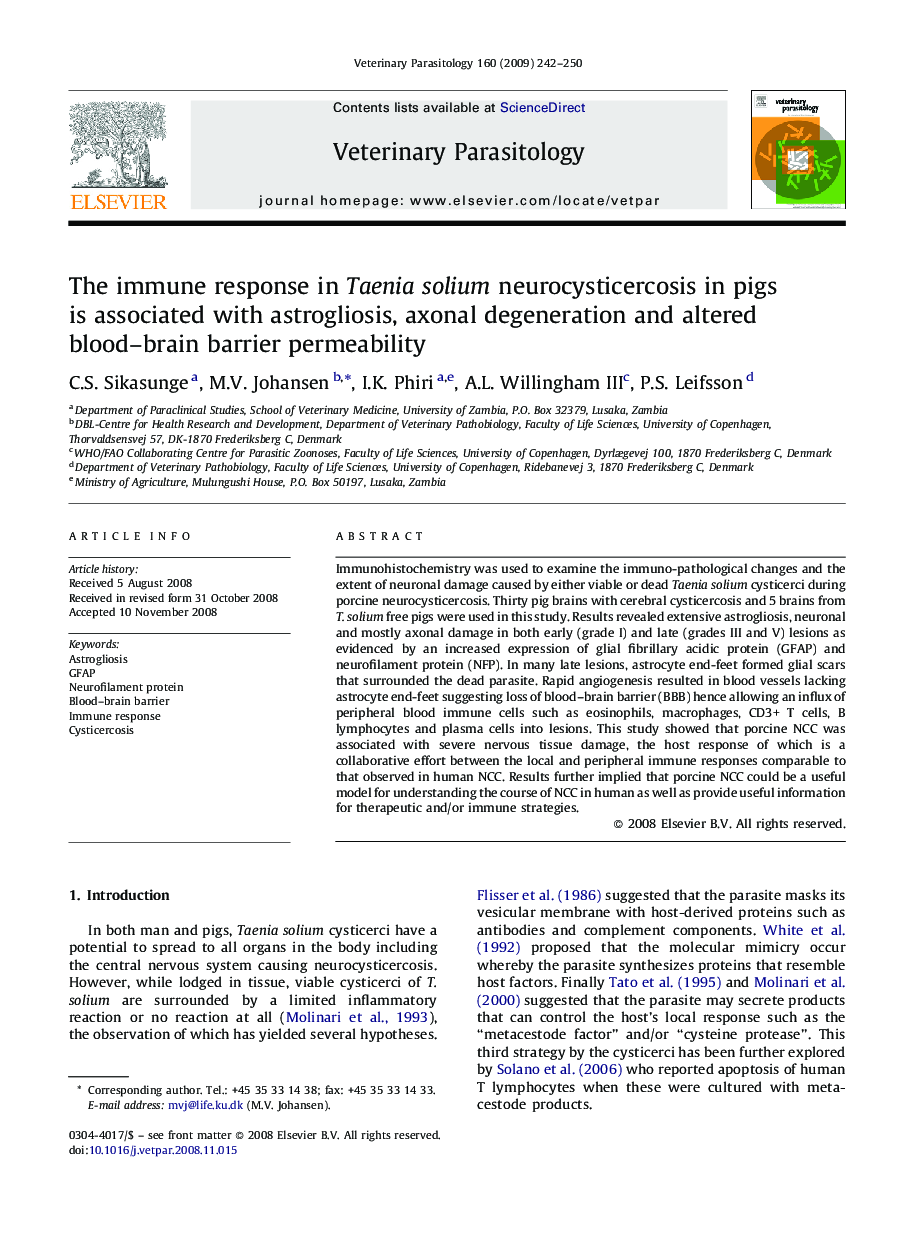| Article ID | Journal | Published Year | Pages | File Type |
|---|---|---|---|---|
| 2471195 | Veterinary Parasitology | 2009 | 9 Pages |
Immunohistochemistry was used to examine the immuno-pathological changes and the extent of neuronal damage caused by either viable or dead Taenia solium cysticerci during porcine neurocysticercosis. Thirty pig brains with cerebral cysticercosis and 5 brains from T. solium free pigs were used in this study. Results revealed extensive astrogliosis, neuronal and mostly axonal damage in both early (grade I) and late (grades III and V) lesions as evidenced by an increased expression of glial fibrillary acidic protein (GFAP) and neurofilament protein (NFP). In many late lesions, astrocyte end-feet formed glial scars that surrounded the dead parasite. Rapid angiogenesis resulted in blood vessels lacking astrocyte end-feet suggesting loss of blood–brain barrier (BBB) hence allowing an influx of peripheral blood immune cells such as eosinophils, macrophages, CD3+ T cells, B lymphocytes and plasma cells into lesions. This study showed that porcine NCC was associated with severe nervous tissue damage, the host response of which is a collaborative effort between the local and peripheral immune responses comparable to that observed in human NCC. Results further implied that porcine NCC could be a useful model for understanding the course of NCC in human as well as provide useful information for therapeutic and/or immune strategies.
